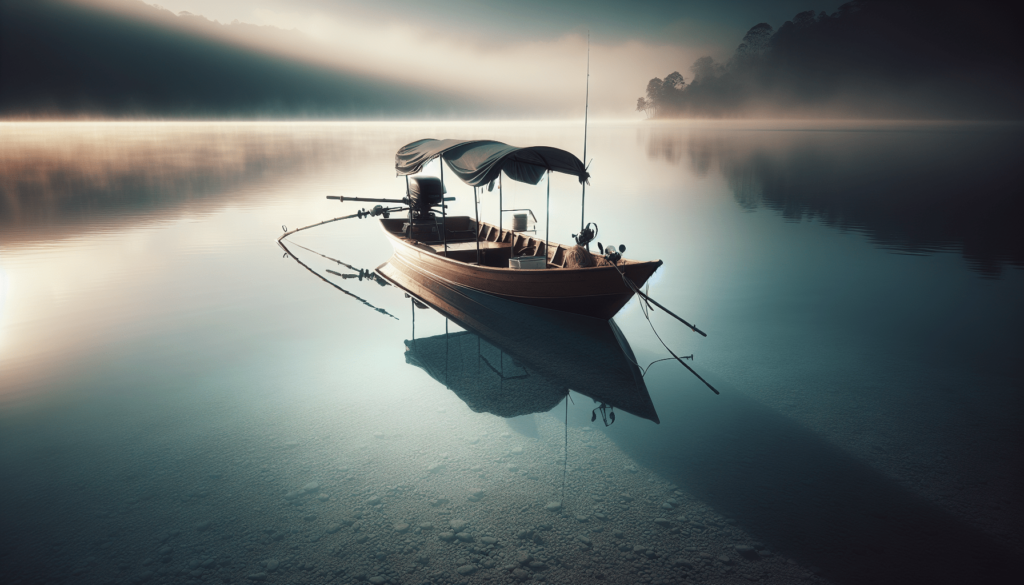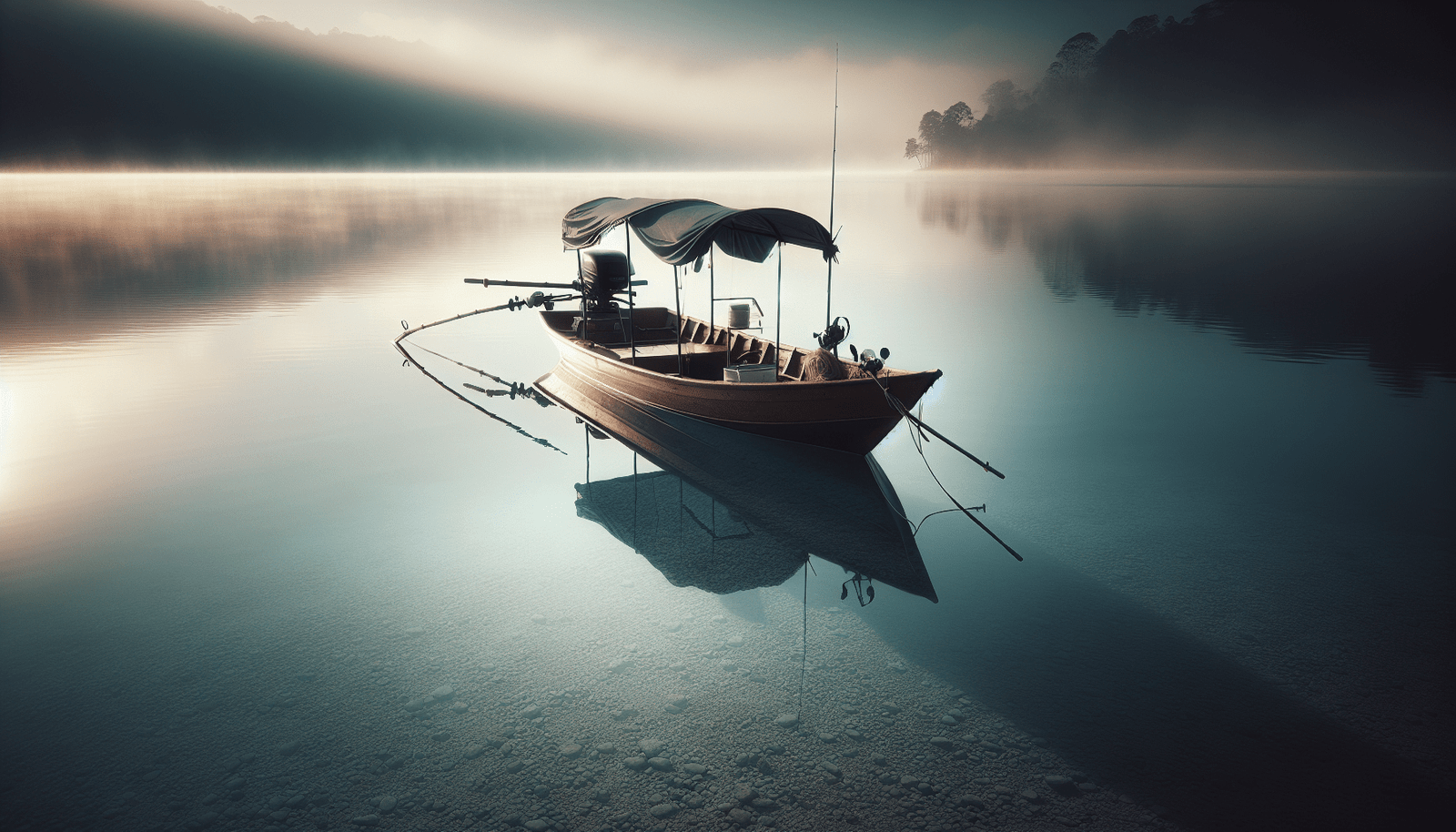Embark on an exciting journey of small boat fishing, which combines the thrill of the catch with the serene beauty of the water. This guide is your go-to resource for understanding the essentials of safety and honing your fishing techniques from a smaller vessel. From wearing the right life jacket to mastering the art of casting from limited space, you’ll discover valuable tips to enhance your fishing experience while ensuring you’re safeguarded against the unexpected. Whether you’re navigating a quiet lake or venturing into coastal waters, these insights will equip you with the knowledge to make every fishing trip memorable and safe.
When you set out on your small boat fishing adventure, grasping the essentials of how your boat moves and reacts in different conditions is key to a successful trip. Let’s dive into what you need to know.
Essentials of boat stability
Boat stability is paramount; it’s what keeps you afloat and upright. Your boat’s design plays a big role, but so does your understanding and management of onboard weight. Center your weight and distribute it evenly, avoiding abrupt movements that could tip the balance. Remember, a stable boat not only ensures safety but also enhances your fishing experience.
Importance of weight distribution
How you arrange gear and passengers directly impacts your boat’s performance. Weight concentrated too far forward or aft affects the bow’s rise and fall, while uneven side-to-side distribution can lead to listing. For optimal handling and stability, maintain a balanced load, and always consider how shifts in movement or additional catch can alter your boat’s center of gravity.
Dealing with changing weather conditions
Weather can change rapidly, affecting water conditions and boat dynamics. Keep an eye on forecasts and be prepared to adjust your plans. High winds and rough seas demand respect; knowing when to head back is vital. In less than ideal conditions, slow down and steer steadily, ensuring you and your boat remain safe.
Safety Gear Essentials
Safety should never be an afterthought. Equipping your vessel with the right gear can make all the difference in an emergency.
Life jackets and personal flotation devices
Life jackets are a non-negotiable. Wear a properly fitting life jacket at all times. Not only is it smart, but it’s also often the law. Ensure there’s a suitable life jacket for every passenger aboard, including pets.
Communication devices for emergencies
In an emergency, being able to call for help is crucial. Waterproof VHF radios, cell phones in waterproof cases, or satellite phones are your lifelines to the shore and other boats. Make sure devices are charged and within easy reach.
First aid kit and fire extinguishers
Accidents happen, and being prepared with a stocked first aid kit can address minor injuries promptly. Similarly, a fire extinguisher is a must-have in case of an onboard fire. Familiarize yourself with the use of both items.
Navigational tools
From traditional compasses and charts to modern GPS devices, navigational tools help you know where you are and where you’re headed. Keep backups and know how to use them should electronics fail.

Pre-Departure Checklist
Before you venture out, a thorough check can prevent issues on the water.
Weather and water conditions check
Always check the local weather and water conditions before departure. Understanding what to expect can help you plan accordingly and decide if it’s safe to head out.
Boat inspection and maintenance
Inspect your boat for any potential problems. Check the engine, fuel levels, battery, and hoses. Regular maintenance can prevent unexpected failures that could leave you stranded.
Safety gear inventory
Double-check your safety gear. Ensure everything is in place, accessible, and in good working condition. Missing or malfunctioning equipment is a safety risk.
Notifying someone about your trip details
Let someone onshore know your plans – where you’re going and when you expect to return. This information is crucial for search and rescue operations should you not return as planned.
Fishing Techniques for Small Boats
Maximize your catch with techniques suited for the smaller craft.
Trolling methods suitable for small crafts
Trolling from a small boat can be highly effective. Use a slow, steady pace to cover more area. Smaller boats allow for precise navigation around structures where fish like to hide.
Drifting and anchor fishing strategies
Drifting lets you cover different depths and areas without mechanical propulsion, making it ideal for small boats. Anchor fishing, meanwhile, allows you to stay in a promising spot, waiting for the fish to come to you. Each method has its place; use them according to the conditions and target species.
Using fish finders effectively
Modern fish finders are invaluable, even for small boats. They can help you locate fish and underwater structures. Learn to interpret the data effectively to enhance your fishing strategy.

Casting Tips from a Small Boat
Space is limited, so your casting technique needs to adapt.
Casting techniques to maximize space
Use side-arm casts or underhand flips in tight spaces. These techniques reduce the risk of snagging your gear or hooking a fellow angler. Practice to become proficient and precise.
Preventing tangling with fellow anglers
Communication is key when fishing with others. Coordinate who casts where and when. Establish clear zones and casting order to prevent crossed lines and frustration.
Choosing the right gear for boat size and target species
Select compact, versatile gear suited for the confined space of a small boat and the species you’re after. Multi-purpose rods and reels can save space and increase your chances of success.
Maneuvering and Boat Handling
Effective boat handling can enhance your fishing experience.
Steering and throttle control tips
Learn to read the water and adjust your speed and direction accordingly. Smooth, deliberate movements help maintain control and minimize disturbance.
Anchoring and docking strategies
Mastering anchoring techniques ensures you stay put once you find the perfect spot. And when it’s time to return, knowing how to dock safely, regardless of the conditions, is essential.
Dealing with currents and waves
Currents and waves challenge small boats. Face waves head-on at a steady, controlled speed to reduce the risk of capsizing. Use currents to your advantage, allowing them to carry you to desired spots while conserving fuel.
Fish Handling and Conservation
Ethical fishing practices ensure future generations can enjoy the sport.
Proper catch and release techniques
Handle fish with care. Use wet hands or gloves to avoid damaging their protective slime coating. Remove hooks gently and release the fish as quickly as possible.
Minimizing harm to the fish
Using barbless hooks, circle hooks, or artificial lures reduces injury. Always have tools like pliers or a hook remover handy to aid in quick releases.
Understanding local regulations for conservation
Familiarize yourself with and adhere to local fishing regulations. These rules help maintain healthy fish populations and ecosystems. Stay informed about size and bag limits, closed seasons, and protected areas.
Waterway Etiquette
Sharing the waterways respectfully ensures a positive experience for everyone.
Respect for other anglers and boaters
Keep a courteous distance from other anglers and boaters. Avoid crowding or cutting off others, especially in popular fishing spots.
Navigating crowded fishing spots
Patience and communication go a long way in crowded areas. Wait your turn and be willing to move if a spot becomes too congested.
Minimizing noise and disturbance
Operate your boat at a low speed near fishing areas to reduce wake and noise. Remember, quiet not only shows respect for others but can also improve your fishing success.
Emergency Procedures
Knowing what to do in an emergency can save lives.
Man overboard protocol
Immediately stop the boat and turn towards the person overboard, keeping them in sight. Throw a flotation device to them and approach cautiously to avoid causing injury.
Engine failure troubleshooting
Familiarize yourself with basic engine troubleshooting. Check the fuel line, filter, and battery connections. If you can’t fix the issue, prepare to use your communication devices to call for help.
What to do if you’re lost at sea
Stay calm and stay with your boat, as it’s easier to spot than a person in the water. Use your communication devices to call for help, providing your last known location and the nature of your emergency.
Environmental Awareness
Protecting the environment ensures the future of fishing.
Avoiding sensitive habitats
Steer clear of fragile ecosystems, such as coral reefs or sea grass beds, to prevent damaging them. Understand the areas you’re fishing in and respect their vulnerabilities.
Trash and discharges policies
Keep the waters clean for wildlife and fellow anglers. Hold onto your trash until you can dispose of it properly on land. Follow regulations regarding waste discharge to minimize environmental impact.
Promoting sustainability in fishing practices
Adopting sustainable fishing practices, such as catch and release, selective gear, and respecting quotas, contributes to the health of fish populations. Support conservation efforts and educate others on best practices.
By keeping these tips in mind, you can enjoy a successful and responsible small boat fishing adventure. Stay safe, respect the environment, and most importantly, have fun out there on the water.


